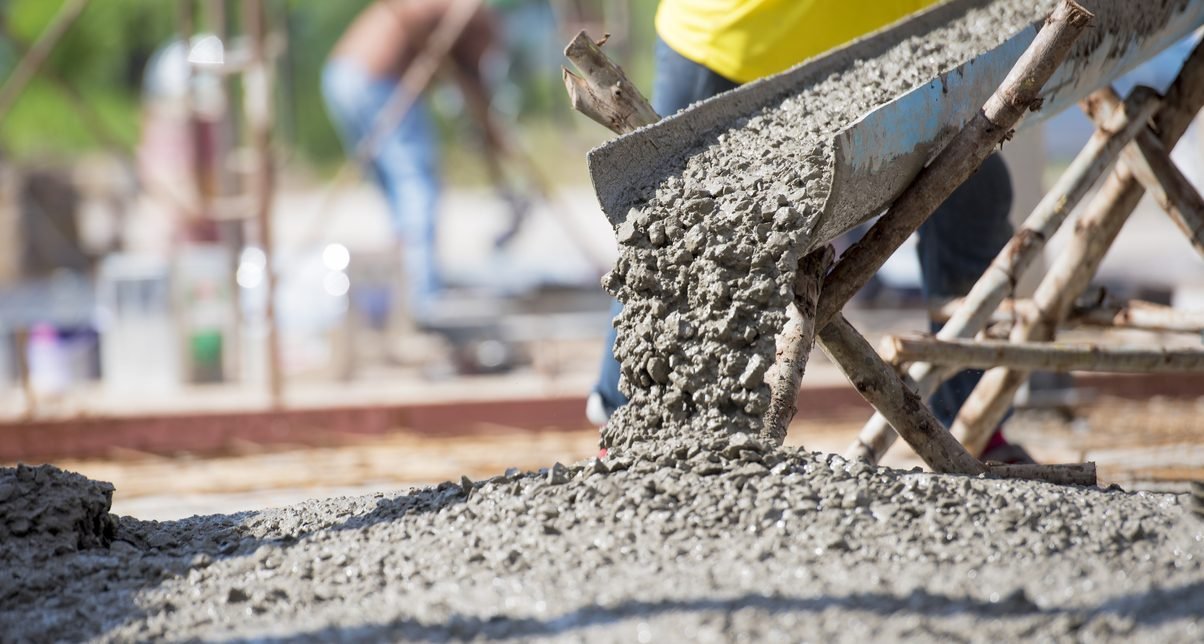
When you’re estimating your next concrete job, regardless of whether you’re putting together a quick quote or submitting a formal bid, you need to nail your takeoff. If your material takeoff measurements and calculations aren’t accurate, you’ll overestimate or underestimate the project.
If your material quantities aren’t complete and accurate, it will impact your material cost estimates and directly impact your labor cost estimates.
What is a Concrete Takeoff?
A takeoff is simply a complete list of all materials needed, and the quantities of each, based on the plans and specifications. A concrete takeoff would include all the types of concrete required, including their compressive strength, measured in pounds per square inch, and the amount needed, typically calculated in cubic yards.
In addition to the concrete takeoff, you’ll need to do takeoff on other items required to complete the job like formwork, rebar, reinforced welded wire mesh, prestressed cables, anchor bolts, and vapor barriers.
Review Plans & Specs
Thoroughly review the plans and specifications to ensure accurate measurements and takeoffs, so you aren’t working with incorrect construction costs when calculating your bid. Getting precise measurements and quantities is essential in accurately bidding on a project. Digital takeoff software can ensure correct measurements are obtained to submit a complete bid.
Make sure that you are taking measurements from the right place. There will be times when the project documents instruct you not to scale the drawings or use the written or calculated dimensions provided in the specifications. This often occurs when electronic documents are used because enlarging or shrinking the size of the drawing to print them can result in the scale being incorrect, adversely affecting your bid. If you have any doubt about where to take your measurements from, ask the architect for clarification.
As you review the plans and specs, look for any inconsistencies between the plan drawings and specifications, omissions of information, and anything else that looks off. For example, maybe the project documents don’t specify a vapor barrier for the slab on grade of a building, or perhaps the foundation walls are calling for the concrete to be 2,000 psi when you know it should probably be double that. Again, if something looks wrong, contact the architect or engineer to get the correct information.
Understand the Scope
If you’re a general contractor responsible for the entire project, the scope of work is laid out in the project documents, and you will likely do takeoffs for each trade to ensure that the estimates and bids submitted by your subcontractors are accurate.
If you’re a concrete contractor, you’ll need to review the plans and specs to determine the scope of the concrete work required on the project. When bidding to a general contractor, review the bid invite to ensure you bid just the work they are asking for, which might be more or less than what you expect.
For example, if you’re accustomed to performing the site prep when doing concrete work, you want to make sure the general contractor isn’t subbing that work out to someone else. On the flip side, perhaps the general contractor wants you to be responsible for the site prep, but you don’t have the capacity to do it and may need to subcontract that work out yourself.
Check the Scale
Before you start doing your concrete takeoff measurements, be sure to make note of the scale on each plan sheet and whether different scales are being used for various details on the same sheet. When it comes time to do your measurements and calculate your measurements and materials correctly, you’ll need this info.
If you are performing your concrete takeoff manually, you’ll need to keep track of the scale for each section on your own. If you’re using digital takeoff software, you can set the scale to ensure your measurements are accurate as it automatically calculates them.
Take Your Measurements
Now that you’ve reviewed the plans and specs, verified the scope, and noted or set your scale. It’s time to start taking measurements. For manual takeoffs, that means printing off the plan sheets you’ll need, breaking out the scale ruler, colored pencils, and highlighters. Don’t forget to count any items you’ll need in addition to measuring the area and linear feet of where the concrete is going.
With a digital takeoff solution, it’s a matter of pointing, clicking, and dragging your mouse to get measurements for the area by getting the length and width or linear feet depending on what materials you are taking off. Using takeoff software for your concrete jobs can save a ton of time in getting your measurements and doing calculations since you can set the height, or thickness, of a slab to get the volume of concrete needed.
Calculate Materials
Once you have all your measurements and counts, you can start calculating how much materials you’ll need and then determine your costs. To figure out the volume of concrete you’ll need, multiply the length by the width of the area you measured and then multiply that by the height, or thickness (L x W x H). If your measurements are in feet, this gives you the volume in cubic feet, so you would need to divide that number by 27 to get that number in cubic yards.
Again, if you are using a digital takeoff solution, it will calculate all of this for you, and you can also add in your unit prices to get your total material costs based on your takeoffs. When calculating material costs, whether manually or digitally, be sure and check with your supplier to get current pricing. Price volatility has been a concern of late, so it’s essential to not just assume that prices are the same as they were on the job you just finished.
Double-Check Your Work
After completing your takeoff, go back and double-check your measurements and calculations. It never hurts to have an extra set of eyes to review or spot check to ensure everything was measured correctly and all your calculations for material quantities and prices have been done correctly.
Taking the extra time to do this may seem like a hassle at first, but once you’ve made it part of your process, it will easily improve the quality of your bid submission.
Final Thoughts on Concrete Takeoffs
Your concrete takeoffs lay the groundwork for your estimates and bids. If they’re incomplete or incorrect, it can screw up your numbers. Accurate takeoffs help you determine the exact quantities needed for all your concrete materials and supplies. They’re also required to determine your labor and equipment needs for your concrete job. If you miss items during takeoff or don’t get accurate measurements, you’ll either overestimate the project and not win the bid or you’ll underestimate and risk winning a project that won’t be profitable.
Takeoff software like PlanSwift by ConstructConnect is a great option to ensure that you get accurate measurements for your estimates. It’s also a huge time saver over doing takeoffs manually. These tools are only as good as the user, so it’s important that estimators get the proper training and are comfortable using the software.




Responses